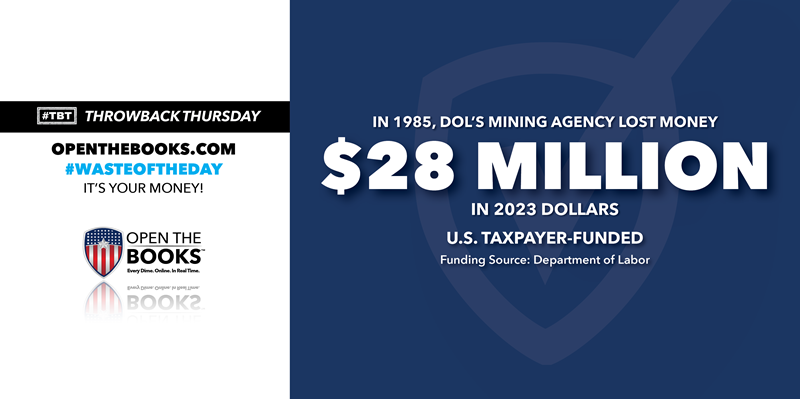
With Speechwriters on Staff, NY Gov Spends $2M on Outside Firms
May 1, 2023

New York Gov. Kathy Hochul spent $2 million to hire outside speechwriters for her recent State of the State addresses, according to The New York Times.
Major consulting firm Deloitte made over $1 million for “project management” on a book and a speech in Hochul’s first full year as governor, while Boston Consulting Group made $838,000 for its help, which was listed in state records as “SOS Support,” The Times found through a public records request.
Another firm was paid $25,000 just to help hire a writer for Hochul’s state-of-the-state book “Achieving the New York Dream.” She paid another $60,000 to Fenway Strategies in 2022 for writing, editing, and speechwriting, The New York Post also reported.
Politicians frequently turn to ghostwriters for major political speeches, and consulting firms have become a mainstay of New York government. But Hochul’s use of such firms in preparing the annual state message appears to be an unusual.
Representatives of three of Hochul’s predecessors — Andrew Cuomo, David Paterson and George Pataki — said they had never paid for outside help to prepare for the annual address.
Hochul’s office defended the expenditures, claiming these consultants never made policy recommendations or decisions.
The New York Governor’s Office had a generous operating budget of $122 billion, which is more than enough to hire speechwriters. In fact, Hochul does have an in-house staff of multiple speechwriters, and just recently were interested in hiring more. So Hochul paid a staff of at least two full time speech writers, along with a small army of communications specialists, all to outsource the important work to outside consultants.
This is incredibly wasteful and insulting to New York residents, and Gov. Hochul should use the staff she employs to do the jobs they were hired to do instead of outsourcing work to expensive consultants.
Billions in U.S. Funds May Have Gone to the Taliban
May 2, 2023

Since the disastrous withdrawal from Afghanistan in the summer of 2021, the U.S. has continued sending money to the country. Now, a watchdog claims that the U.S. can’t be confident that billions of aid to Afghanistan isn’t funding the Taliban.
John Sopko, the Special Inspector General to Afghanistan Reconstruction (SIGAR), recently testified before the House Oversight Committee, “Unfortunately, as I sit here today, I cannot assure this committee or the American taxpayer we are not currently funding the Taliban.”
He continued “Nor can I assure you that the Taliban are not diverting the money we are sending from the intended recipients, which are the poor Afghan people.”
The U.S. has committed Afghanistan $8 billion in aid since our military withdrawal in 2021, according to CNN. Biden Administration officials have repeatedly stressedthis aid is strictly going toward humanitarian efforts via non-governmental organizations and other humanitarian aid organizations.
Sopko, however, admitted there is effectively no monitoring of these funds to ensure they are not going to the Taliban. The U.S. does not currently recognize the Taliban as a legitimate government.
No effective oversight means U.S. funds could end up in the wrong hands, “subjected to waste, fraud, and abuse,” SIGAR wrote.
The U.S. needs to seriously reevaluate its funding and monitoring processes to ensure taxpayer dollars are actually helping the Afghan people, and not ending up of in the hands of the brutal and barbaric Taliban government.
Boston Used $4M of Fed Funds on College Tuition for Undocumented Immigrants
May 3, 2023

Boston Mayor Michelle Wu recently announced a new initiative providing $4 million in funding for a community college tuition assistance program that will be available to all residents, including undocumented immigrants — all using federal dollars.
In a recent press release, Wu touted the expansion of an existing program called the Tuition-Free Community College Plan, which, “covers the balance owed after financial aid and other funding has been applied and provides students with a stipend at six partner community colleges.” It also provides students a $250 stipend per semester for up to three years.
The expanded program will now pay off up to $2,500 of student loan debt if that debt is preventing a student from continuing their education at a Boston community college. It’s also being expanded to include students of all income levels, graduation years, and immigration statuses.
Of the $4 million, $3 million comes from the federal American Rescue Plan Act and $1 million comes from federal Community Project Funding, secured by Rep. Ayanna Pressley (D, Mass.-7).
The TFCC Plan has served over 1,000 students since 2016, or a little over 100 students per year.
If Boston really wanted to help students attend college, it would work with partner institutions to lower their tuition prices, ensuring students are getting a good value for their tuition. Instead, by selectively subsidizing students with government funds, it’s increasing the cost of education for everyone as bloated institutions reap the rewards.
Throwback Thursday: U.S. Wasted $10M on Mine Equipment Testing Center
May 4, 2023

Throwback Thursday!
In the early 1980s, the Department of Labor’s Mine Safety and Health Administration wasted $10 million – $28 million in 2023 dollars – operating a mine equipment testing facility at a loss for three years.
Sen. William Proxmire, a Democrat from Wisconsin, awarded the agency his Golden Fleece Award in 1985 for this poorly managed project.
According to Proxmire, from 1981 to 1984, the mine safety agency’s equipment testing center charged private companies using their facilities at rates so low that it recovered less than 10% of what the center cost to operate. Auditors had been pointing out cost overruns since 1981, but the center continued operating at a loss.
The reason the center operated at such a heavy loss was because it hadn’t updated its prices in over 20 years, as costs rose while revenue stayed flat. In 1985, it lost about $300,000 each month. Despite this, officials didn’t seem very concerned, waiting over a year to implement its next fee increase.
Not only is this bad business, but its also in violation of federal law, which requires the center to recover the entire cost of equipment testing by charging the equipment manufacturers fees for its services. By operating at a loss, it shifts the financial burden off the companies benefiting from it and onto the taxpayers.
In addition to its financial mismanagement, the center wasn’t even excelling in its main purpose of ensuring mining equipment was safe. It post-evaluated less than 2% of 25,000 pieces of equipment that it had previously approved for use. That’s troubling since one out of eight pieces of equipment initially tested turned out to have critical or major deficiencies later.
By keeping its fees low, taxpayers were forced to pay for the benefits the wealthy mine equipment manufacturers received. As Proxmire notes, “April may be too early to give MSHA coal in its stocking for this pitiful performance, but it’s a grand time for awarding it a Golden Fleece.”
U.S. Mint Loses $171 Million Minting Coins
May 5, 2023

Rising raw material prices are hitting the United States Mint hard. It now costs more than 2.5 cents to make a penny, and more than 10 cents to make a nickel, resulting in a net loss of $171 million to mint these coins in 2022, according to The Washington Times.
In addition to pennies and nickels, the cost of dimes and quarters have also gone up, but they still cost less to make than their value. The U.S. Mint admitted, “The average price of copper, nickel and zinc, which are the primary metals in each coin, have increased each year, resulting in an overall increase in the cost of metal for each denomination.”
Total losses on these coins have been steep, with pennies taking a net loss of $92.7 million to produce, and nickels losing a total of $78 million, totaling $171 million in gross loss.
While inflation hasn’t helped, the costs to mint these coins have been high for some time. Even before the aggressive inflation, in 2020, it cost 1.76 cents to make a penny and 7.42 cents to make a nickel.
Some lawmakers are concerned about the rising costs of producing coinage. Sens. Joni Ernst (R-IA) and Maggie Hassan (D-NH) have introduced bipartisan legislation that would allow the U.S. Mint to change production methods to lower costs.
While the debate over the utility of the penny has raged for some time, the total loss the U.S. takes on these coins year after year should cause the government to seriously rethink which coins we continue to mint and how to mint them.
The #WasteOfTheDay is presented by the forensic auditors at OpenTheBooks.com.